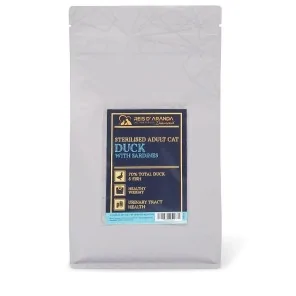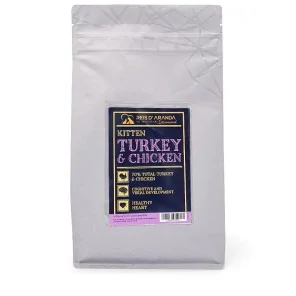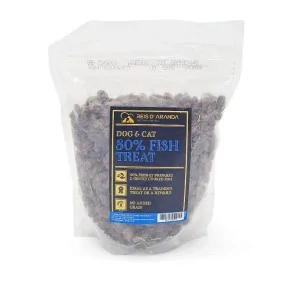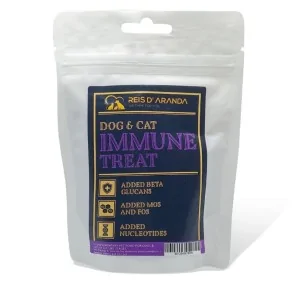Its name says it all: the Vienna blue rabbit comes from Austria. Not only is it beautiful with its shiny blue-grey...
THE EXOTIC SHORTHAIR CAT
INTRODUCTION
The exotic cat is a breed of cat which has the build of the Persian cat but with short hair. It was obtained by hybridisation of the British Shorthair and the American Shorthair with the Persians, resulting in a cat with a robust build and short, dense hair.
THE ORIGIN OF THE EXOTIC SHORTHAIR
In 1871, the world of the cat fancy, as an organised hobby, had its beginnings with the preparation of the first major cat show at Crystal Palace, Sydenham, London. The event led to a huge increase in the ownership of purebred cats. Once the hobby was well established, its next impetus depended on it being able to continually attract new fanciers in increasing numbers.
This was achieved, and is still the case today, through the continuous development of new breeds, colouring patterns (patterns), colours and their almost unlimited combinations. Of all the breeds that have been created, most fail to arouse great enthusiasm. However, the subject of this book, the Exotic Shorthair, is an example of one of the greatest success stories of this process. Initially, however, the Exotic Shorthair was not conceived as a breed. It was the result of several developments in the USA.
The ultimate creation and success of the Exotic Shorthair was based on the fact that it was a great idea and resulted in a breed that was truly different from the rest. Equally important was that there was a large and identifiable market of pet owners and exhibitors to appeal to once it was established. The Exotic Shorthair is a short-coated Persian and appeals to those who would like to own a Persian but recognise that they do not have the time or inclination to attend to their considerable grooming needs.
To understand how the Exotic Shorthair came about, we must go back in time to certain events that took place in the USA in the late 1950s. At that time, the breed we know today as the American Shorthair was called the Domestic Shorthair. This breed had been present in the cat fanciers' world since its early days. It was quite successful, but proved difficult to maintain as the years went by.
The Domestic was derived from the indigenous cat population that was brought to the USA by the British and other European pioneers. As a consequence of its humble origins, it was considered a second-class feline. This was a progressive situation as glamorous foreign breeds gained more and more fame. In fact, it was not uncommon for Domestic exhibitors to find that they had no facilities to display their specimens on benches and were unable to obtain cups and other awards.
If this breed was to be competitive with the glamorous breeds, it needed a complete facelift. Only when it overcame its image as a second-rate breed would it achieve its deserved status. In contrast, a virtually regal status had been accorded to the Persian from the moment it appeared at the first cat show: it was placed on a pedestal and was considered the epitome of what a pedigree show cat should be.
As a consequence, some breeders thought that hybridisation of the Domestic with the Persian would improve the type of the former, thus making it more attractive. The breed could be better distinguished from the normal mongrel cats so familiar to Americans. At the same time, the density of its coat was expected to improve. To complete this new image, the breed lost the name ‘Domestic’ in 1965 and became the American Shorthair. This gave it a better and more nationalistic identity.
There were also breeders who were happy with the Domestic ‘type’, but believed that other colours could be added, which would increase its attractiveness. In particular, there was a desire to achieve the green-eyed silver colour of the Persian. During this same period, some breeders were experimenting with the Persian. Carolyn Bussey attempted to create a brown Persian in the late 1950s. She crossed a Persian with a Burmese and the short haired offspring was lovely. This gave her the determination to try for a short haired Persian. Carolyn was not alone in this desire.
Other breeders were crossing the Persian with other breeds, such as the Russian Blue, to achieve the same end, and so several hybrids were produced from the Persian. It should be added that the introduction of new colours or colouring patterns is quite common in feline circles. But when it is done to change the appearance of a breed, as in the case of the American Shorthair, it is less common and always more controversial.
In any hobby involving pets, there are always ongoing debates about the rights and wrongs of trend-setting influences, as well as the need to do or not to do this or that to ensure a breed's survival, wider appeal and progress. These debates have always been heated when it comes to cats. The situation that arose in the case of the American Shorthair maintained this tradition.
There were those who believed that the breed was being ruined by changes in type for the sole purpose of approximating the whims imposed by fashion. These breeders are known as traditionalists and can be found in all breeds. In this case, their only concern was that more than one colour or colouring pattern was being introduced. Then there were those who considered that change meant progress. They believed that this was an acceptable form of evolution on the basis that a cat breed is not fixed and therefore not immutable.
Others felt that the changes gave progressive breeders an unfair advantage in the show ring when the new type of American Shorthair began to win at the expense of the traditional type. All in all, the situation was totally unacceptable to the veteran breeders of the time. They felt that their breed was no longer true to its origins or to its official standard.
It may be added that although these hybrid shorthair cats looked different when compared to the normal American shorthair of the time, it was not as exaggerated as one might think. In those days, the Persian did not have such a characteristic face as it does today. But we must look at the situation through the looking glass of the times when this was happening, and the changes were considered to be extreme.
The controversial situation was resolved in 1966 by the late Jane Martinke, a famed breeder of American Shorthairs and judge of all cat breeds. Jane could see the danger of the trend towards changing the essence of the American Shorthair, but still had the lucidity to see that the new type had great potential as a breed in its own right.
Jane suggested to the Cat Fanciers Association (CFA), the leading American cat society with a studbook, that a separate class be created to give this type of hybrid breed status. This suggestion was accepted and this category was named ‘Established Hybrid Breed’. Interestingly, alongside this hybrid, the Korat breed, which is not a hybrid, was placed in that category in the same year.
At first it was suggested that this new breed should be called Sterling, as the colour silver was quite popular (sterling silver means sterling silver). However, this name was never used and the name Exotic Shorthair was, in the end, the preferred name. Today the breed is called Exotic Shorthair or simply Exotic. It was also decided that any colour and colour pattern would be acceptable in this breed. A standard was drawn up based on that of the Persian, but with a short coat, and eventually the Exotics were bred among themselves. Their first appearance at cat shows was in 1967.
Once the Exotic Shorthair became a reality, other Persian breeders began to show increasing interest in the Exotic Shorthair. Initially, there were those who had reservations about this new breed, but its growing success eventually overcame all barriers. It was not long before the major Persian catteries began to create their first lines of Exotics. In 1972, the American Cat Fanciers Association (ACFA) granted recognition to the breed, and the Cat Fanciers Federation (CFF) soon followed suit. Today, all the major cat societies of the world give full recognition to this breed and the possibility of champion titles.
The Persian cat of the 1950's looked quite different than it does today. Over the years, the breed became more extreme, and the Exotic standard was modified to reflect this. For some years now, when a new colour or colouring pattern has to be considered by the CFA for these breeds, the agreement of both breed councils is necessary before any additions can be made.
WHAT DOES THE EXOTIC SHORTHAIR LOOK LIKE?
HEAD: The head should be rounded and massive with full cheek bones and a beautiful rounded forehead which continues into the skull to form a vault. The head should show good width. The muzzle should end in a strong, rounded chin. The head should be supported by a short, thick neck.
Nose: The nose should be short and broad and have a defined stop. The stop is the point where the muzzle meets the forehead. In the Exotic (and Persian), the angle created between the forehead and the nose at the stop (or frontonasal depression) is always less than in any other breed. The nose should be fully formed.
EYES: Large, round and set wide apart. Eyes should be clearly visible and never deep set. However, clearly visible does not mean protruding, as this would spoil the sweet expression of this breed. The colour should be bright. Both almond-shaped eyes and oriental shape or set on (meaning slanting towards the muzzle) are considered faults.
EARS: Small and rounded at the tip. They should be set wide apart and show a slight forward inclination when viewed in profile. They should not be set too wide at the base and should be set low and cleanly in the contour of the head.
BODY: The body should be of medium to large size and should have a robust, cobby build. The chest is deep and the shoulders are solid, as is the back. The body is muscular but not obese. The overall balance of head, body and limbs is more important than size per se.
LIMBS : The limbs should be short and well boned, giving them a thick appearance. When viewed from the front, the forelegs are straight, and this also applies to the hind legs when viewed from behind.
FEET: Large and rounded. They should be firm with toes close together. There should be five toes on the front feet (including the dewclaw) and four on the hind feet.
TAIL: All standards call for a short tail but proportionate to body length. The proportion is never detailed. As a basic guide, it should be slightly less than the length of the body from the base of the tail to the shoulders.
COAT: Plush, soft in texture and very dense. The hair stands out from the body due to its density and should never stick to the body. The coat is longer than in typical short-haired breeds, but not so long as to fall over the body.
COLOURS
There are seven unicolours (also known as solids or ‘self’) in this breed: white, black, blue, chocolate, chocolate, lilac, red and cream. The colour is always the same throughout the body. It should be uniform from the tips to the roots of each coat, and must be free from white hairs (except in the white variety) and any shaded markings. Shaded coat implies the existence of areas of the coat where the colour is darker than in other areas.
PATTERNS (MARKINGS)
There are about 15 patterns or markings in the Exotic. These include single patterns, such as the tabby, and compound patterns, consisting of two or even three overlapping patterns. Many of these patterns are available in all colours, and others are based on specific colour combinations. Faults refer to serious deficiencies in the design or mark being considered, in addition to faults in eye colour or eye flange, lack of contrast between the markings and the ground colour, and lack of or excessive white.
The following are some of the combinations which may be seen in the Exotic Shorthair.
- TABBY: There are two varieties of tabby. One is the mackerel or brindle tabby, in which there are continuous stripes running vertically from black stripes extending along the spine. This is the natural or wild tabby. In this variety, the stripes, perpendicular to the spine, should be narrow and numerous. The tail may or may not have continuous hoops. The colour of the tip of the tail should be the same as the colour of the markings.
The second variety is the blotched tabby or classic tabby. It is characterised by dark stripes forming large circular oyster-shaped streaks on the flanks. Seen from above, this pattern on the shoulders should look like the wings of a butterfly.
In both types of tabby, the head markings are the same. The main features are the ‘M’ spot on the forehead, lines extending backwards over the skull and the dark stripes extending from the eyes above the cheek bones. The tail has full rings and the tip of the tail will be the same colour as the markings. In the case of both varieties, the chest has continuous loops and the legs have rings. The toes are speckled, as is the belly.
- BICOLOR: This is a pattern of colouring which combines one colour with white. The patches of colour should be well defined, even and evenly distributed throughout the coat. The GCCF of Great Britain requires that not more than two thirds of the coat should be coloured and not more than half of the coat should be white. The face should have both white and coloured patches. In some cat societies it is preferred that, as a minimum, the feet, limbs, belly, chest and muzzle should be white, with a white inverted ‘V’ spot on the face being desirable.
The white colour of a bicolour specimen is created by what is known as the white spotting gene, the effect of which is random. This means that there will always be certain kittens which cannot be shown in beauty shows due to a lack or excess of white. However, they are still valuable for breeding programmes if they show a good quality coat and have a good body type. The eyes are copper, orange or deep golden. The nose and footpads shall be pink and/or the colour of the body markings. Any of the solid colours is acceptable.
- TORTOISHELL: This characteristic pattern, also called tortoishell or tortie, is a pattern in which two colours are intermingled, well defined and distributed over the whole body. The black tortoiseshell comprises black with intermingled shades of red on the body, feet and tail; the truffle and footpads are pink and/or black. Tortie is a sex-linked colouring and is usually restricted to females. Male tortoiseshells are rare and are usually sterile.
Other colours include chocolate tortoiseshell, where chocolate replaces black; lilac-cream, where lilac is intermixed with cream; and blue-cream, where blue is intermixed with cream. The colour after the term ‘tortoise’ is the colour corresponding to the base of the hairs.
- TORTOISHELL AND WHITE: This attractive colouring pattern is known as calico in the USA and is also called tricolour. The black patches and red tones should be well distributed throughout the coat. They should be interrupted by white patches which should occupy at least one third of the body and at most one half. The eyes are copper, orange or deep golden. The nose and the pads of the feet shall be black and/or pink.
Possible colours are blue tortie (blue-cream), chocolate tortie and lilac tortie (lilac-cream), each with white. As with the bicolours, the tortoiseshell and tortoiseshell and white patterns always give rise to unique specimens, as the pattern is never exactly the same from one cat to the next.
- TORTOISHELL TABBY: In this colouring pattern, also known as torbie, the tabby is covered with shades of red or cream. Both patterns must be clearly visible. In the USA this pattern is called patchedtabby. The eyes are copper, orange or deep gold. The nose and footpads are brick red or pink.
The colours blue, chocolate or lilac are available. In the case of the Persian cat, the tortie tabby and white is an accepted colour; no doubt this pattern will also meet with approval in the case of the Exotic in the near future.
- TABBY MOTEADO : The markings on the head, chest and belly are the same as in the case of the mackerel and blotched tabby. The pattern on the legs and body comprises a series of oval, rounded or rosette markings following the lines of the tabby pattern. The tail should show numerous narrow rings or markings.
The colour of the eyes for all colour varieties, except silver, is copper, orange or deep gold. In the case of silver the eyes shall be green or hazel. Possible colours are brown, blue, chocolate, lilac, red, cream and silver. The nose and pads are the same colour as the other tabby varieties.
- VAN BICOLOR AND TRICOLOR: This pattern takes its name from that which can be seen in the Van Turca breed. The coat is white and the colour is limited to the tail, head and ears. Up to three small patches of colour are permitted on the body and legs of a high quality specimen. Symmetry of the markings is not essential, although they should show a pleasing balance. The eyes are copper or deep orange. The colour of the nose and pads should match that of the adjacent coat. This pattern is available in all bicolours, tricolours, tabby, van smoke and shaded. Acceptance of the full range of patterns will depend on the individual cat society.
- SMOKE: This tipped coat is a contrasting coat in which the colour of the head, back and feet is darker than the rest of the body. In tipped coats only the tip of the coat is coloured; the base is depigmented and light in colour. The undercoat should be as white as possible. When the cat is in movement the colour will appear to oscillate between lighter and darker shades. Smoke is the darkest tipped coat variety: the colour affects about 2/3 of the length of each coat. The eyes are copper, orange or deep golden. The colour of the nose and pads should match the colour of the coat.
- SHELL: Very nicely tipped coat in which the tips of the hairs of the head, ears, tail, back and flanks are coloured, the rest of the coat length being as white as possible. The result is a sparkling effect. There should be no tipping on the chin, belly, chest and underside of the tail, which will be white.
The eyes are copper, orange or deep gold, except in the case of the black shell tipped, where they shall be emerald green or blue-green. In specimens with the black shell tipped pattern, the nose is brick red and the pads of the feet are black or seal (seal). In all other colours, these parts of the anatomy should be in accordance with the coat colour. The tips of the hairs may be of any colour accepted in the Persian breed.
- SILVER SHADED: This tipped coat represents a darker version of the shell, to which it is otherwise similar. The black colour may extend up to a third of the length of the coat and should be as even as possible over the whole coat. The eyes are emerald green or blue-green. The nose is brick red and the pads are black or seal. The silver shaded blue is the same as the silver except that the black is diluted and blue. The eyes are copper, orange or deep gold. The nose and the pads of the feet are blue.
- PELTRE: This tipped coat comprises a white coat with even black shading to give the effect of a pewter coloured coat. The legs are black shaded, but the undercoat, chin and belly are white. The eyes are copper, orange or deep golden. The nose is brick-red with a black rim. The footpads are black or dark brown. The blue pewter is the same as the pewter, but the black is replaced by blue, including the nose and footpads.
- GOLDEN: This is one of the most recent tipping coats and the undercoat is apricot coloured and gradually deepens to a golden colour. The chin, belly and chest are pale apricot. The head, tail, back and flanks are any shade of gold, with the tip hairs being seal brown or black to enhance the golden colour. The tipping is darker in the Golden shaded variety than in the Golden shell. The eyes are green or blue-green. The nose is brick red and the outline is black or seal. The pads of the feet are black or seal.
- POINT: This colouring pattern is sometimes called the Siamese pattern. The colour is confined to the distal markings (points): the mask (face), ears, paws, feet and tail are darker in colour than the rest of the body. If present, any shading should be restricted to the shoulders and flanks. The mask should cover the entire face, but not extend to the head. The eyes should be of a clear, well defined blue colour and the more intense the better. The nose and pads should complement the colour of the points.
The range of colours and colouring patterns available is wide and includes all solid colours, plus several of these in combination with the tortie point, the tabby point and the tortie tabby point. There is no black colourpoint, this colour being reduced to a dark brown colour called seal.
HEALTH OF THE EXOTIC SHORTHAIR CAT
This breed is prone to obesity, so a full, but controlled, predominantly dry diet should be provided. He will also need frequent brushing because, although his coat is short, it is very dense and can build up. His eyes need daily cleaning.
On the other hand, it is a fairly healthy breed, with less incidence of the diseases typical of its close relative, the Persian. Some exotic cats may have the gene for polycystic kidney disease. There are also cases of ophthalmological, jaw or facial alterations due to their short face.
Excessive tearing of the eyes can cause the eye area to rust, which can be a source of infection. For this reason, we must be very attentive to their eyes and clean them properly.
THE PERSONALITY OF THE EXOTIC SHORTHAIR
This breed is ideal for families, being considered the most familiar and affectionate feline breed. Perhaps this is why loneliness is so distressing for them, affecting them so negatively that it can lead to various illnesses. Because of this character trait and personality of the exotic shorthair, it is crucial to teach them to manage loneliness.
Still on the temperament of the exotic shorthaired cat, we can say that it is a calm and very docile feline, so it will not be difficult to educate it and even get it to learn some tricks. It is also an intelligent and faithful feline and, in general, easy to live with.
CONCLUSION
Cats of this breed are creatures of habit and prefer quiet surroundings and docile treatment. They love to be groomed and petted by children, but are unlikely to play boisterously with them.
Leave a comment
Log in to post comments
















